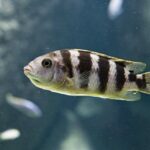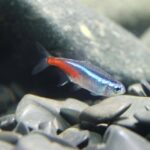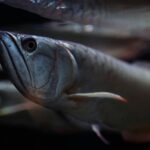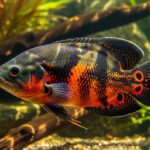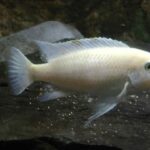Fishkeeping is a rewarding hobby, but it comes with its challenges, one of which is ensuring the health of your aquatic companions. Fish are susceptible to various diseases, and early detection and appropriate treatment are critical to maintaining a healthy aquarium or pond environment. In this guide, we’ll explore common fish diseases, their symptoms, causes, and treatments.
1. Common Fish Diseases
a. Ich (White Spot Disease)
Ichthyophthirius multifiliis, commonly known as Ich or white spot disease, is one of the most prevalent fish ailments. It is caused by a parasite that manifests as small white spots on the fish’s body, fins, and gills.
- Symptoms: White spots, scratching against objects, rapid gill movement, lethargy.
- Causes: Poor water quality, sudden temperature changes, stress.
- Treatment:
-
- Raise the water temperature gradually to 78-80°F (25-27°C) to speed up the parasite’s life cycle.
- Use Ich-specific medications containing malachite green or formalin.
- Ensure good water quality and add aquarium salt to reduce stress.
b. Fin Rot
Fin rot is a bacterial infection that results in frayed or disintegrating fins. It is often caused by poor water conditions.
- Symptoms: Ragged, frayed fins; discoloration at the edges of the fins.
- Causes: Bacterial infection (often secondary to injury or poor water quality).
- Treatment:
- Improve water quality through regular water changes.
- Use antibacterial medications like erythromycin or tetracycline.
- Remove aggressive tank mates if fin nipping is the issue.
c. Dropsy
Dropsy is not a disease but a symptom of internal infection or organ failure. It causes the fish to appear bloated with raised scales.
- Symptoms: Swollen abdomen, raised scales, lethargy, loss of appetite.
- Causes: Bacterial infection, kidney failure, or poor water conditions.
- Treatment:
- Isolate the affected fish.
- Treat with broad-spectrum antibiotics such as kanamycin.
- Improve water quality and reduce stress factors.
d. Velvet Disease
Velvet disease, caused by the parasite Oodinium, is a condition where fish appear to be covered in a gold or rust-colored dust.
- Symptoms: Golden or rusty sheen, rubbing against objects, lethargy, rapid gill movement.
- Causes: Parasitic infection, poor water conditions, stress.
- Treatment:
- Dim the aquarium lights as the parasite thrives in light.
- Use copper-based medications.
- Maintain optimal water conditions and reduce stress.
e. Swim Bladder Disorder
Swim bladder disorder affects a fish’s buoyancy, causing it to float upside down or struggle to stay upright.
- Symptoms: Difficulty swimming, floating to the surface or sinking to the bottom, bloated appearance.
- Causes: Overfeeding, constipation, physical injury, or infection.
- Treatment:
- Fast the fish for 24-48 hours.
- Feed peeled, boiled peas to relieve constipation.
- In cases of infection, use antibacterial medications.
2. Preventing Fish Diseases
Preventing diseases is easier and less stressful than treating them. Here are some key preventive measures:
a. Maintain Optimal Water Quality
- Test water parameters regularly for pH, ammonia, nitrite, and nitrate levels.
- Perform regular water changes (10-25% weekly) to remove waste and toxins.
- Use a reliable filtration system.
b. Quarantine New Fish
- Always quarantine new fish for 2-4 weeks before introducing them to the main tank. This helps prevent the spread of diseases.
c. Avoid Overcrowding
- Provide adequate space for your fish. Overcrowding leads to stress, which weakens their immune systems.
d. Feed a Balanced Diet
- Offer a variety of high-quality foods, including pellets, flakes, frozen, and live foods, to ensure nutritional balance.
e. Regular Tank Maintenance
- Clean the substrate and decorations to prevent the buildup of harmful bacteria.
- Monitor the tank for any signs of illness or unusual behavior.

3. Medications and Natural Remedies
While medications are often necessary, some natural remedies can complement treatments or act as preventive measures.
a. Aquarium Salt
- Salt can help reduce stress, improve gill function, and treat minor infections.
- Use non-iodized salt and follow dosage instructions carefully.
b. Garlic
- Garlic is a natural immune booster and appetite stimulant for fish.
- Add minced garlic to their food or use commercial garlic-based fish treatments.
c. Indian Almond Leaves
- These leaves release tannins that have antibacterial and antifungal properties.
- They also help mimic natural habitats for some fish species.
d. Commercial Medications
- Antibiotics: For bacterial infections, use antibiotics like kanamycin, erythromycin, or tetracycline.
- Antiparasitics: Treat parasitic infections with medications containing copper, formalin, or malachite green.
- Fungal Treatments: Use antifungal medications for diseases like cotton wool disease.
4. Dealing with Disease Outbreaks
If a disease outbreak occurs, act quickly to prevent it from spreading:
a. Isolate Affected Fish
- Use a hospital tank to quarantine sick fish and administer treatment separately.
b. Treat the Entire Tank if Necessary
- In cases of highly contagious diseases like Ich, treat the main tank to eliminate the parasite.
c. Disinfect Equipment
- Clean nets, siphons, and other equipment with hot water or a mild bleach solution to prevent cross-contamination.
d. Monitor Progress
- Keep an eye on the affected fish and the tank’s water parameters throughout the treatment period.
5. Conclusion
Understanding fish diseases and their treatments is essential for any fishkeeper. Early detection, proper diagnosis, and timely intervention can save your fish’s life and maintain a thriving aquarium. By prioritizing preventive measures, maintaining optimal water conditions, and using the right treatments, you can minimize the risk of diseases and enjoy a healthy, vibrant aquatic environment.
Remember, each fish species has unique needs, so always research their specific requirements to provide the best care possible. Happy fishkeeping!


